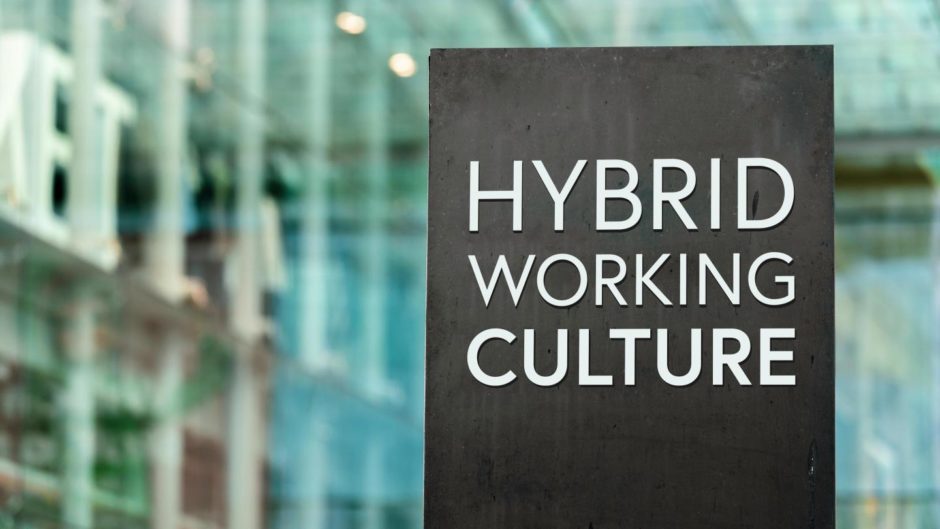A return to the office – beyond level zero – will have to be “adequately managed” to avoid workplace stress for employees.
That’s according to director of occupational health at TAC Healthcare Group Dr David Leiper.
Employers are currently being asked to support working from home until Scotland moves to beyond level 0, as planned for Monday August 9.
It is only then that businesses will be allowed to plan a gradual return to the office.
Avoiding work-related stress: it would be ‘difficult’ to go back to pre-Covid
Prior to the pandemic, many employees might say flexible working didn’t exist in their workplace. To be offered the flexibility of working from home was somewhat rare.
But the pandemic forced people to adapt to working from their humble abodes, and Dr Leiper believes it would be hard for businesses to move forward, if they plan on going backwards.
“It would be very difficult to go backwards now and say we aren’t going to promote hybrid or flexible working,” he said.
“If we look at the root of work-related stress – which is probably the leading cause of workplace sickness in the UK right now – one of the causes is organisational change.
“For the past 18 months people have been working from home and it would be a huge change to be told ‘we want you back in the office’.
“So that change has to be adequately managed.
“I think we will end up terming this as hybrid working, rather than flexible working, whereby we’ll spend a percentage of time working in the office and a percentage working from home.”
Dr Leiper added: “We conducted a brief employee survey looking at what would improve employees’ mental wellbeing.
“The top thing people requested was hybrid or flexible working. So I think it has to be top of the agenda for businesses.”
Despite organisations being allowed to plan a return to the office from August 9, the Scottish Government is still asking companies to consider some working from home “in line with business discussions on the needs and desires of the business and their employees”.
Hybrid or flexible working: what are the benefits to employees?
Although a complete shock to the system for so many people at the start of the pandemic, many of us have become accustomed to working from home. Many more have reaped the benefits of a flexible working set-up.
However, there are two sides to every story and for some the pandemic has led to decreased mental wellbeing, and the novelty of home working has worn off.

Working from home has allowed many to live less stressful lives with no commuting – resulting in less stress and money saved on travel costs, a better work balance with more time for family, and even the improved ability to manage long-term or chronic illnesses.
“For some people it’s been a real benefit in terms of work life balance,” agreed Dr Leiper.
“Some people have found they’ve been just as efficient working from home, they haven’t had to commute and they’ve been able to do bits and pieces around the house.”
According to the Chartered Institute for Personnel and Development (CIPD), which represents HR professionals, flexible working also promotes job satisfaction and general wellbeing.
The other side of working from home
A lot of employees are desperate to return to the office as their working set-up may not be ideal, or they just miss the social interaction. Some also find themselves working longer hours as they struggle to juggle their workload in the house.
We were pleased to contribute to this @acasorguk guidance as members of the @beisgovuk #FlexibleWorkingTaskforce. Check out these useful resources to help make #HybridWorking and #FlexibleWorking succeed in the workplace, in consultation with your people ⬇ https://t.co/Mu71p9WBfy
— CIPD (@CIPD) July 13, 2021
Dr Leiper explained: “The other side is you get employees who miss the face-to-face communications and actually, they feel as if they’re not as productive at home.
“If you don’t manage your working day properly you end up starting work earlier and working later.
“That’s more difficult to control and manage for managers when working from home.”
A case study: Advice Direct Scotland
Scottish charity Advice Direct Scotland moved its 68 staff to a four-day working week in 2018 – without any changes to their pay.
They each work 9am-6pm, with an hour for lunch and two 15-minute breaks.
Employees’ additional days off are staggered throughout the week to ensure the charity’s phones and email inboxes remain well-manned.
Bosses have hailed the move as a success – with the staff absences dropping around half as a result.
The Glasgow-based charity’s head of business development and policy, Conor Forbes, explained: “You’re not really getting members of staff who might take a day because they’re not feeling particularly up to work.
“They know they don’t have to wait that long until their next day off.”
Conor, who now has Wednesdays off in addition to Saturdays and Sundays, said: “It means I can enjoy the weekend for what it is and use the Wednesday as a self-admin day – doing all the things you might not want to at the weekend.
“Your week is perfectly split up – and it means people are getting an extra day to spend with their friends and family.
“Most of the people I know have moved to remote working.
“But they seem to have struggled a lot more than what I’ve seen with our staff, and I think it’s because of that burnout, particularly when you don’t have that social aspect, as you do in an office.”


